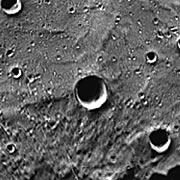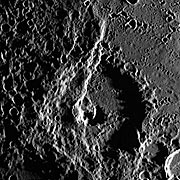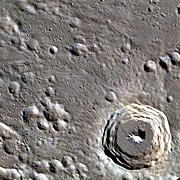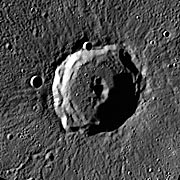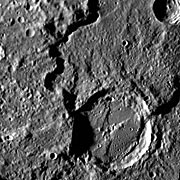- News
- Science
- Scientific Bodies
- Divisions
- Commissions
- Commission A1 Structure
- Commission A2 Structure
- Commission A3 Structure
- Commission A4 Structure
- Commission B1 Structure
- Commission B2 Structure
- Commission B3 Structure
- Commission B4 Structure
- Commission B5 Structure
- Commission B6 Structure
- Commission B7 Structure
- Commission C1 Structure
- Commission C2 Structure
- Commission C3 Structure
- Commission C4 Structure
- Commission D1 Structure
- Commission E1 Structure
- Commission E2 Structure
- Commission E3 Structure
- Commission E4 Structure
- Commission F1 Structure
- Commission F2 Structure
- Commission F3 Structure
- Commission F4 Structure
- Commission G1 Structure
- Commission G2 Structure
- Commission G3 Structure
- Commission G4 Structure
- Commission G5 Structure
- Commission H1 Structure
- Commission H2 Structure
- Commission H3 Structure
- Commission H4 Structure
- Commission J1 Structure
- Commission J2 Structure
- Commission J3 Structure
- Commission X1 Structure
- Commission X2 Structure
- Past Commission Organising Committees
- Working Groups
- Centres
- Scientific Meetings
- Rules & Guidelines
- General Assemblies
- Meeting Proposals
- Future IAU Meetings
- General Assemblies
- EC Meetings
- Officers' Meetings
- Regional Meetings
- Symposia
- Focus Meetings
- Institutional Meetings
- IAU Offices Meetings
- IAU-Sponsored Meetings
- Letters of Intent submitted for 2024
- Letters of Intent submitted for 2023
- Letters of Intent submitted for 2022
- Letters of Intent submitted for 2021
- Letters of Intent submitted for 2020
- Past IAU Meetings
- Templates
- Other Meetings
- Grants & Prizes
- Scientific Bodies
- Publications
- IAU Publications
- IAU Strategic Plan
- Symposia
- WGSBN Bulletins
- Regional Meetings
- Information Bulletins/Catalyst
- E-Newsletters
- Focus Meetings
- Transactions A
- Transactions B
- Related Publications
- GA Newspapers
- CAPjournal
- IAU Books
- Brochures
- IAU Offices
- WG Reports
- Commission Reports
- Division Reports
- Past IAU Publications
- Rules, Guidelines and Instructions for Proceedings
- Publishers
- IAU Publications
- Administration
- About the IAU
- Statutes & Rules
- IAU Policies
- IAU Executive Bodies
- IAU Secretariat
- Resolutions
- Members Administration
- Administrative Dates & Deadlines
- International Organisations Relations
- Donate to the IAU
- Training in Astronomy
- Astronomy for Education
- Astronomy for Development
- Astronomy for the Public
- Office for Astronomy Outreach
- FAQ
- Themes
- Satellite Constellations
- Astronomy in Everyday Life
- How to Report a Discovery
- Careers in Astronomy
- Defining our Place in the Cosmos
- The Constellations
- Light Pollution
- Measuring the Universe
- Near Earth Objects
- How to Participate in Astronomy Research
- Naming of Astronomical Objects
- Naming of Exoplanets
- Buying Star Names
- Naming Stars
- Pluto and the Solar System
- IAU Member Statistics
- Our Moon: the Moon
- Meteors & Meteorites: The IAU Definitions of Meteor Terms
- UNESCO-IAU Portal to the Heritage of Astronomy
- Social Media
- Past Events
- Call for Online Resources
- Astronomy@Home Awards
- Contact
iau1506 — Press Release
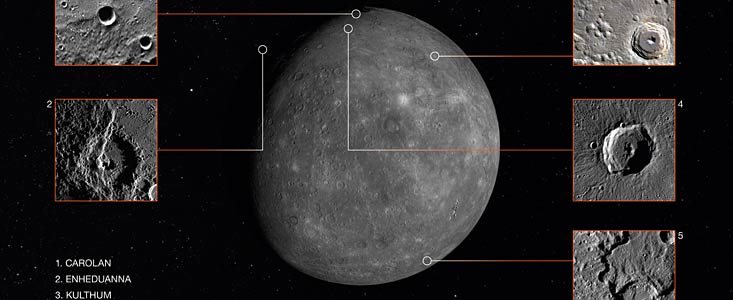
29 April 2015
Mercury Crater-naming Contest Winners Announced
The MESSENGER Education and Public Outreach (EPO) Team has announced the winners from its competition to name five impact craters on Mercury after artists. Winners were selected by the IAU from 3600 submitted names.
The MESSENGER Education and Public Outreach (EPO) Team, coordinated through the Carnegie Institution for Science, has announced the winners from its competition to name five impact craters on Mercury after artists. Entries had to be submitted by 15 January 2015, and the International Astronomical Union (IAU) Working Group for Planetary System Nomenclature made the selections from a total of 3600 submissions, and a semifinal round of 17 names. The newly selected crater names are Carolan, Enheduanna, Karsh, Kulthum, and Rivera.
Under IAU rules, all new craters on Mercury must be named after an artist, composer, or writer who was famous for more than 50 years and has been dead for more than three years.
Turlough O'Carolan (Carolan) was an Irish composer during the late 16th and early 17th centuries; Enheduanna, an Akkadian princess who lived in the Sumerian city of Ur in ancient Mesopotamia (modern Iraq and Kuwait), and is regarded by many scholars as the earliest known author and poet; Yousuf Karsh was an Armenian–Canadian and one of the greatest portrait photographers of the 20th century; Umm Kulthum was an Egyptian singer, songwriter, and film actress active between the 1920s and 1970s; and Diego Rivera was a prominent Mexican painter and muralist between the 1920s and 1950s.
NASA’s MESSENGER spacecraft has been in orbit about Mercury since March 2011 and its mission is due to finally end when it impacts into the planet tomorrow. The MESSENGER spacecraft has far surpassed expectations in both the duration of its mission and in the quantity and quality of data it has provided; the goal of the craft was to take 2500 images of the planet, but it has returned more than 250 000. The EPO team organised the crater-naming competition to celebrate the mission’s achievements.
The winning suggestions came from many different countries. Carolan was suggested by Fergal Donnelly (Belguim), Joseph Brusseau (USA), and Deane Morrison (USA). Enheduanna was submitted by Gagan Toor (India). Karsh was submitted by Elizabeth Freeman Rosenzweig (USA). Kulthum was suggested by Molouk Ba-Isa (Saudi Arabia), Riana Rakotoarimanana (Switzerland), Yehya Hassouna (USA), David Suttles (USA), Thorayya Said Giovannelli (USA), and Matt Giovannelli (USA). Rivera was suggested by Ricardo Martinez (Mexico), Rebecca Hare (USA), Arturo Gutierrez (Mexico), and José Martinez (USA).
More information
The IAU is the international astronomical organisation that brings together more than 10 000 professional astronomers from almost 100 countries. Its mission is to promote and safeguard the science of astronomy in all its aspects through international cooperation. The IAU also serves as the internationally recognised authority for assigning designations to celestial bodies and the surface features on them. Founded in 1919, the IAU is the world's largest professional body for astronomers.
The Carnegie Institution for Science is a private, nonprofit organisation headquartered in Washington, D.C., with six research departments throughout the U.S. Since its founding in 1902, the Carnegie Institution has been a pioneering force in basic scientific research. Carnegie scientists are leaders in plant biology, genetics, developmental biology, astronomy, materials science, global ecology, and Earth and planetary science.
MESSENGER (MErcury Surface, Space ENvironment, GEochemistry, and Ranging) is a NASA-sponsored scientific investigation of the planet Mercury and the first space mission designed to orbit the planet closest to the Sun. The MESSENGER spacecraft was launched on 3 August 2004, and entered orbit about Mercury on 18 March 2011 (UTC), to begin its primary mission — a year-long study of its target planet. MESSENGER’s first extended mission began on 18 March 2012, and ended one year later. MESSENGER is now in a second extended mission, which is scheduled to conclude in April 2015. Sean C. Solomon, the Director of Columbia University's Lamont-Doherty Earth Observatory, leads the mission as Principal Investigator. The Johns Hopkins University Applied Physics Laboratory built and operates the MESSENGER spacecraft and manages this Discovery-class mission for NASA.
Links
Contacts
Lars Lindberg Christensen
IAU Press Officer
Garching bei München, Germany
Tel: +49 89 320 06 761
Cell: +49 173 38 72 621
Email: lars@eso.org

